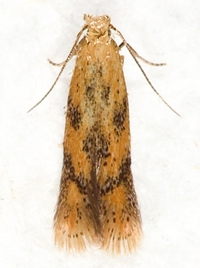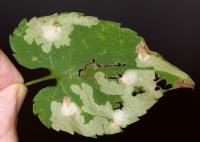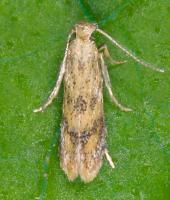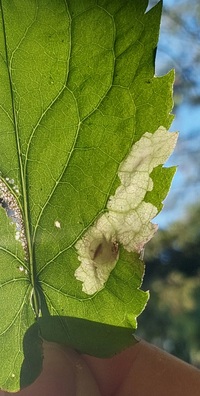
| Recorded by: Mark Basinger and Jim Petranka on 2025-10-17
Madison Co.
Comment: Symphyotrichum cordifolium was host plant. Blotch mines were occupied, nidus is in backlit photo. | 
| Recorded by: Mark Basinger on 2025-06-22
Buncombe Co.
Comment: |
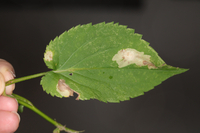
| Recorded by: Jim Petranka, Mark Basinger and Becky Elkin on 2024-09-22
Buncombe Co.
Comment: Occupied mine was on Symphyotrichum cordifolium. | 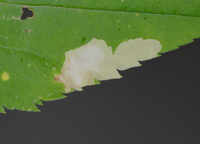
| Recorded by: Jim Petranka and Becky Elkin on 2024-08-21
Yancey Co.
Comment: |
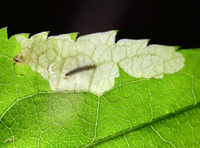
| Recorded by: Jim Petranka and Becky Elkin on 2024-08-21
Yancey Co.
Comment: | 
| Recorded by: Jim Petranka on 2023-07-19
Madison Co.
Comment: Adult was reared from a mine on Symphyotrichum cordifolium; mine with nidus on July 15; adult emerged on July 19 (see companion photos of the mine). |

| Recorded by: Jim Petranka on 2023-07-19
Madison Co.
Comment: Adult was reared from a mine on Symphyotrichum cordifolium; mine with nidus on July 15; adult emerged on July 19 (see companion photos of the mine). | 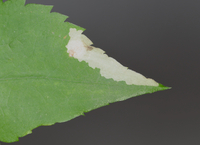
| Recorded by: Jim Petranka on 2023-07-15
Madison Co.
Comment: An occupied mine on Heartleaf Aster (Symphyotrichum cordifolium); adult emerged on 2023-07-19. |
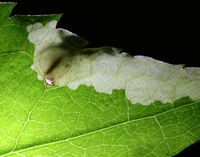
| Recorded by: Jim Petranka on 2023-07-15
Madison Co.
Comment: An occupied mine on Heartleaf Aster (Symphyotrichum cordifolium); adult emerged on 2023-07-19. | 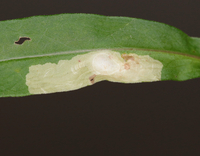
| Recorded by: Jim Petranka on 2023-07-06
Haywood Co.
Comment: |

| Recorded by: Jim Petranka and Becky Elkin on 2022-09-15
Caldwell Co.
Comment: | 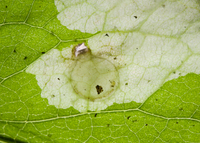
| Recorded by: Jim Petranka and Becky Elkin on 2022-09-15
Caldwell Co.
Comment: |
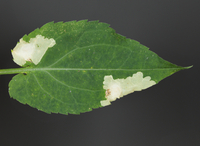
| Recorded by: Jim Petranka and Becky Elkin on 2022-09-13
Haywood Co.
Comment: | 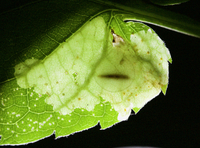
| Recorded by: Jim Petranka and Becky Elkin on 2022-09-13
Haywood Co.
Comment: |
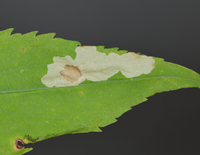
| Recorded by: Jim Petranka and Becky Elkin on 2022-09-13
Rutherford Co.
Comment: | 
| Recorded by: Jim Petranka and Becky Elkin on 2022-09-13
Rutherford Co.
Comment: |
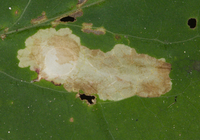
| Recorded by: Jim Petranka and Becky Elkin on 2022-08-25
Clay Co.
Comment: Unoccupied mine was on Symphyotrichum cordifolium. | 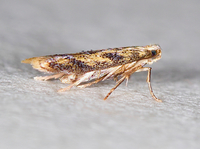
| Recorded by: Jim Petranka on 2022-06-29
Madison Co.
Comment: Occupied mines were on Symphyotrichum cordifolium on June 18; adult emerged on June 29. |
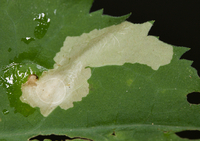
| Recorded by: Jim Petranka and Becky Elkin on 2022-06-18
Madison Co.
Comment: | 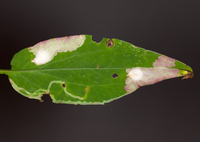
| Recorded by: Jim Petranka and Becky Elkin on 2021-10-25
Buncombe Co.
Comment: Occupied mines were on Symphyotrichum cordifolium. |
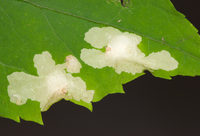
| Recorded by: Jim Petranka on 2021-10-10
Buncombe Co.
Comment: Two occupied mines on Heartleaf Aster (Symphyotrichum cordifolium). | 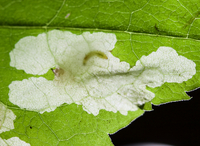
| Recorded by: Jim Petranka on 2021-10-10
Buncombe Co.
Comment: |

| Recorded by: Jim Petranka and Becky Elkin on 2021-09-24
Buncombe Co.
Comment: | 
| Recorded by: Jim Petranka and Becky Elkin on 2021-09-24
Buncombe Co.
Comment: |
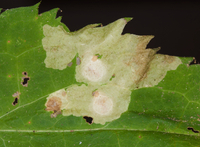
| Recorded by: Jim Petranka and Becky Elkin on 2021-09-12
Madison Co.
Comment: | 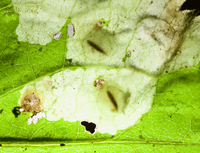
| Recorded by: Jim Petranka and Becky Elkin on 2021-09-12
Madison Co.
Comment: |
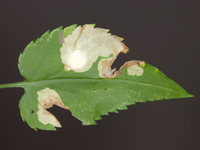
| Recorded by: Jim Petranka and Becky Elkin on 2021-09-02
Madison Co.
Comment: | 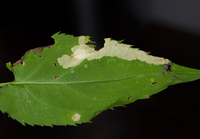
| Recorded by: Jim Petranka and Becky Elkin on 2021-07-23
Graham Co.
Comment: |

| Recorded by: Jim Petranka and Becky Elkin on 2021-07-15
Buncombe Co.
Comment: | 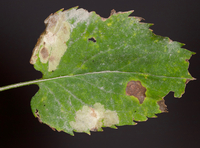
| Recorded by: Jim Petranka on 2020-10-26
Madison Co.
Comment: An occupied mine on Heartleaf Aster (Symphyotrichum cordifolium). |
|

 »
»